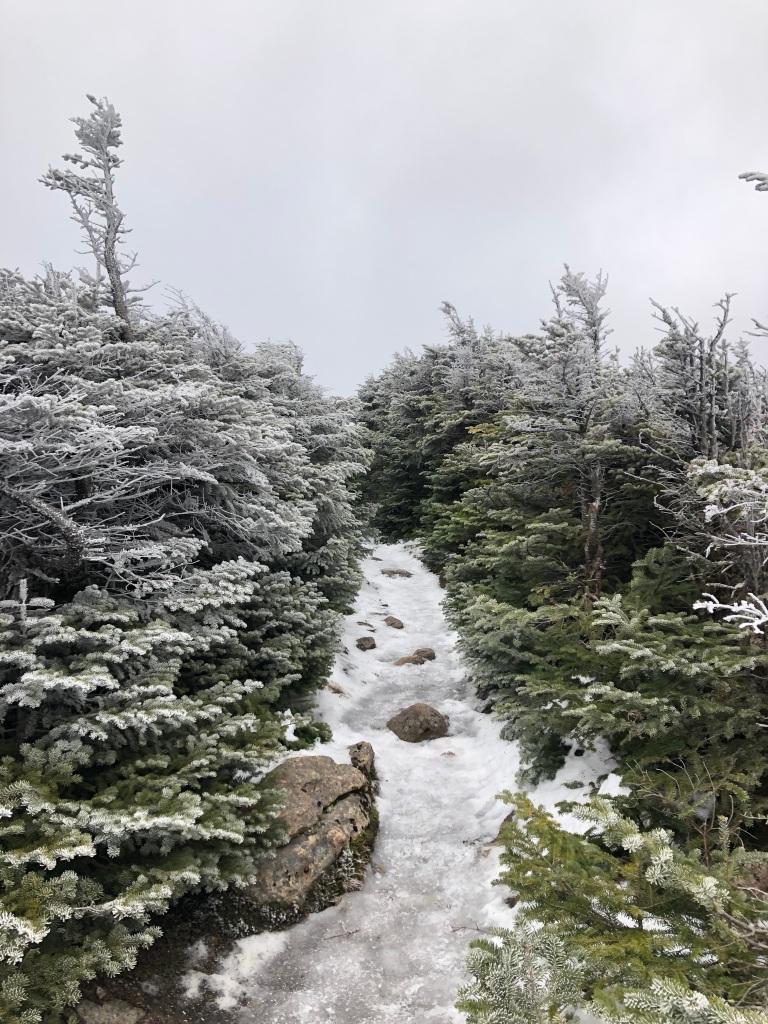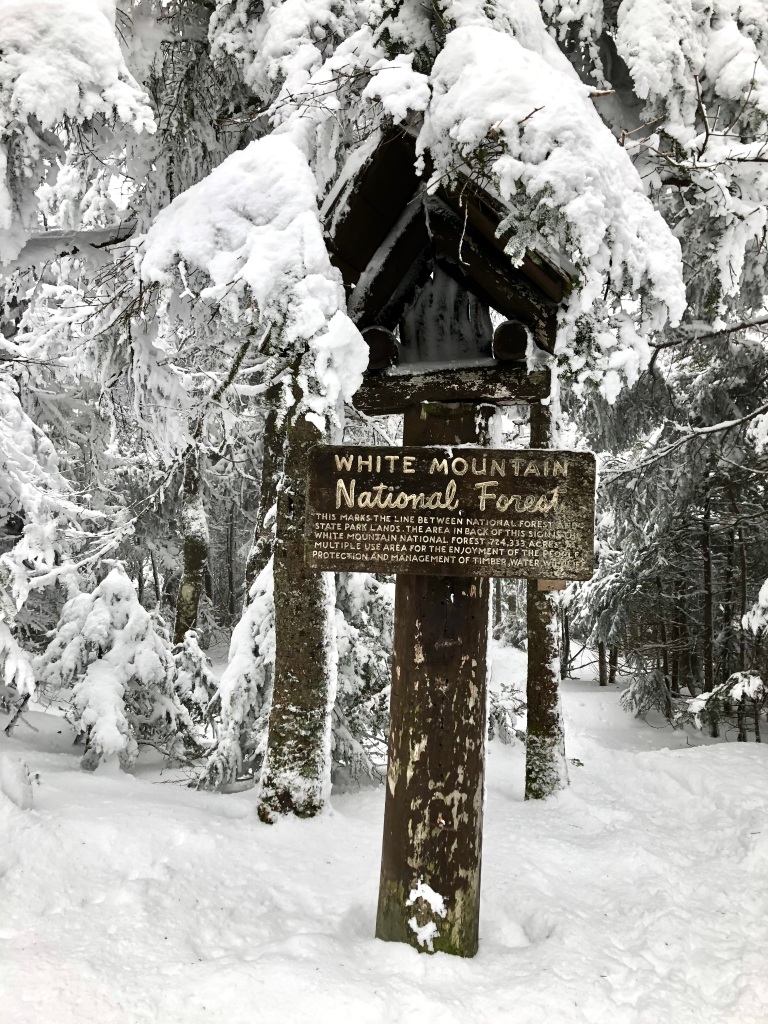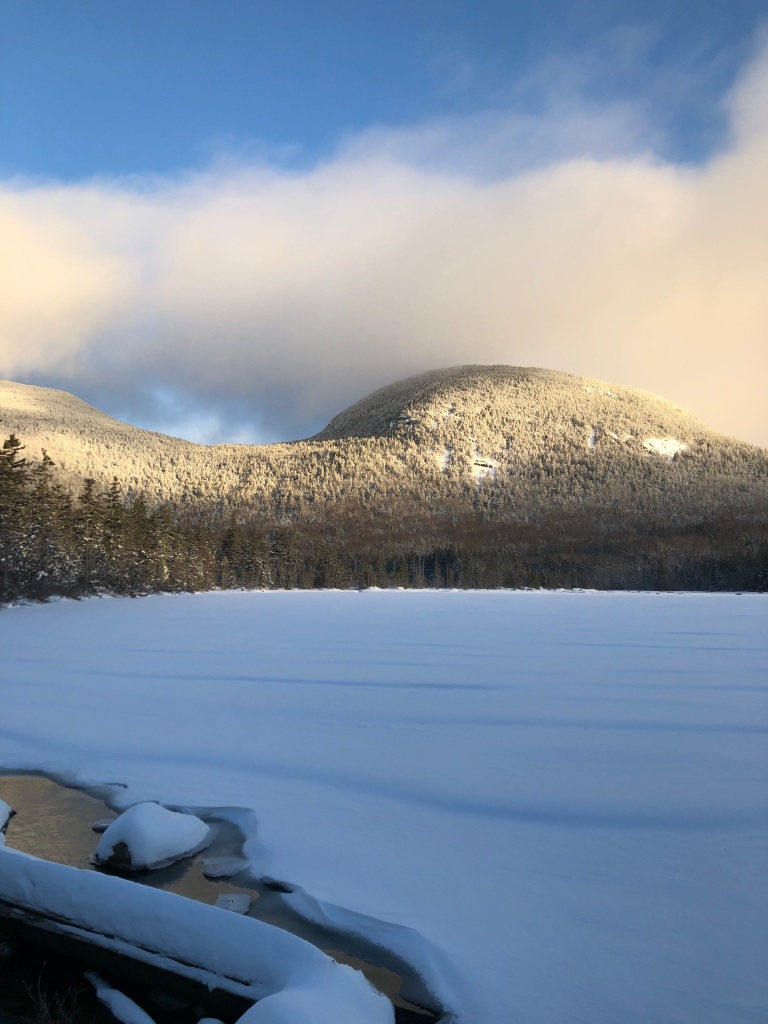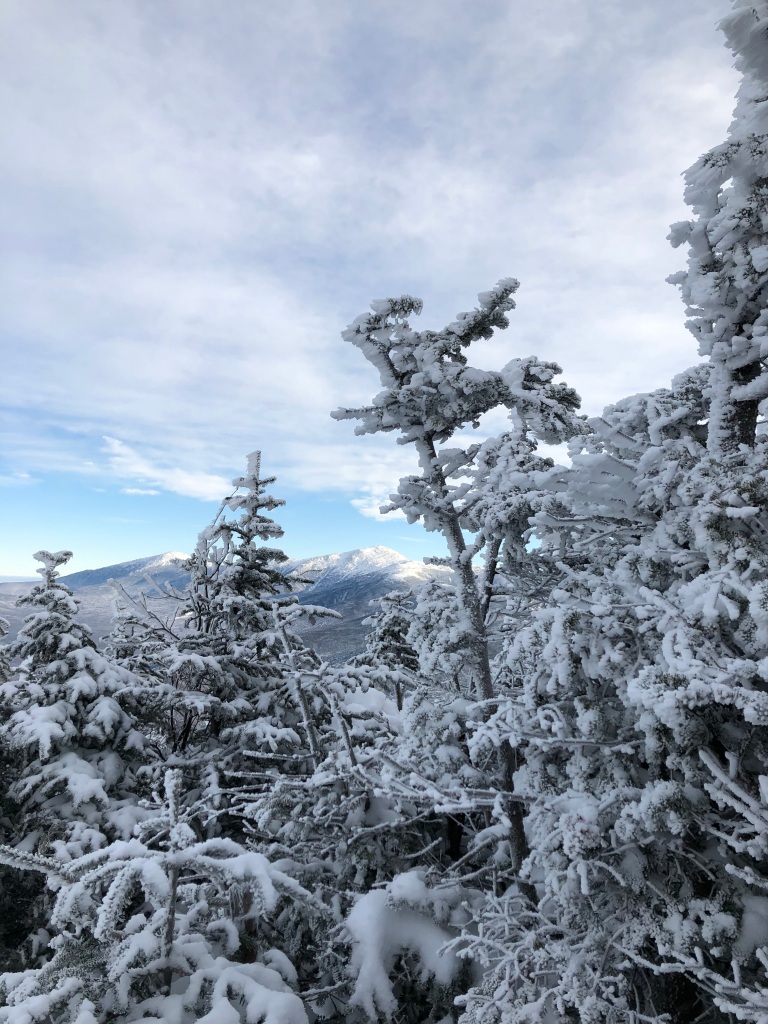While the Winter season in New Hampshire is technically only from December 21st to March 21st, the season of snow and ice is much longer than that. The White Mountains are under frosty just about eight months of the year and so while there’s a technical winter season, there’s also the “it still feels like winter” season. These rules apply for both.
There are certainly more guidelines to winter hiking than what I’ve written below, but these, at the very minimum, should keep you warm, safe, and eager to complete more winter hikes thereafter.
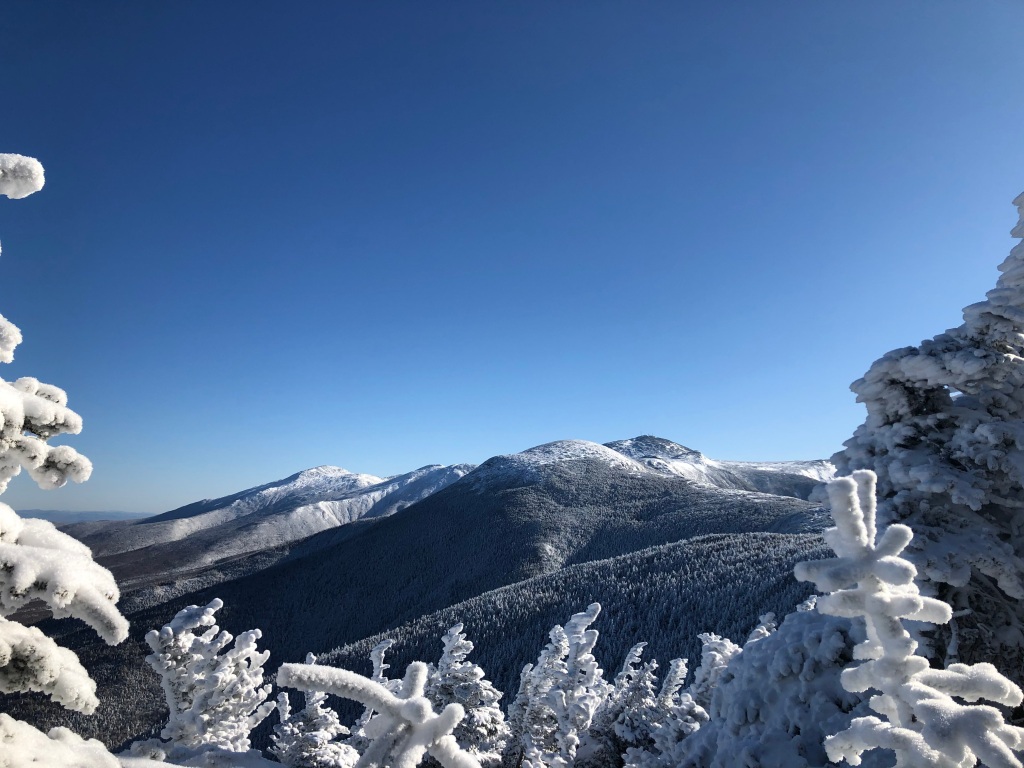
- Layer Up
- I’ve previously written about the perfect layering system. This rule encompasses following that but also making sure not to skimp on any step. Bring all your layers. Don’t skip anything. Don’t think, “oh the forecast looks good so I won’t pack my thick mittens today”. No. Always prepare for the worst in the winter.
- Keep Moving
- The moment you stop moving, is the moment you start losing body heat. Blood will be pulled from your extremities causing a rapid cool down. Try your best in the winter to hike at a pace that will allow you to take as few breaks as possible. The same laws of biology also apply to your furry friends that may be accompanying you. Try not to let them stop and refrain from carrying them unless absolutely necessary or unless they are of the size where they can be stuffed into your coat.
- Limit Sweat
- Manage your layers so that you never get the chance to work up a substantial sweat. As you heat up and sweat you’ll want to drop a layer. In dropping the layer you’re allowing the sweat underneath to evaporate, taking precious body heat with it. If you sweat, dropping a layer will cause a much more rapid cool off than you were going for due to the evaporation so try taking off a layer before you even break a sweat. This will allow you to regulate your body temperature in a controlled fashion.
- Always Speak Up
- Go with your gut and never push past the point where you are afraid for your life or your wellbeing. There is absolutely no shame in needing to turn back ever. If you’re concerned about a chill or stinging in your extremities, speak up. If you forgot an important piece of gear and you are worried about completing your hike without it, speak up. Always speak up.
- Have Dry Backups
- For key items that get a lot of exposure to moisture, make sure to include a dry backup in your bag. It’s super important to stay dry in order to stay warm. The items that are generally susceptible to moisture are balaclavas, face masks, buffs, scarves, mittens, gloves, and socks.
- Keep Your Batteries Warm
- Batteries drain incredibly fast when exposed to the winter temperatures in NH. If you rely on your phone or any other batter powered device as your SOS option, your trail maps, or your directions home, then be sure to keep in in your inner most layer so that it can benefit from your body warmth. Keeping it in a bag or in an outer layer pocket will make it susceptible.
- Check in With Your Pets Often
- If you brought a furry friend hiking with you, be sure to keep a very careful eye on them. If they are shivering, picking up their paws like they couldn’t bear to put them down, or refusing to advance then you must get back to safety immediately. Before you even get to this point, make sure you provide them with the proper gear such as booties and a coat. Use their ears as a litmus test for whether they are sufficiently layered. If their ears are warm and their behavior is normal then they are comfortable and can continue on. If their ears are cold, this tells you that they are not staying warm enough to continue being outside.
- Check the Windchill
- In all season in The Whites, but especially the Winter, you need to check the feels-like temperature and not just the actual temperature. Windchill can take a 32 degree day and make it feel like 10 degrees. This makes a big difference in terms of what you wear, what trails you choose, and whether you even brave the day.
- Stay on the Trail
- The main trails get compacted in the winter as the snow gets tread over and over by snowshoes. This creates a dense layer of snow and ice that may not even budge as you step on it right in the center of the trail. When stepping off the trail, or if you try walking on these trails without snowshoes, you can “post hole”. To post-hole is to create a giant hole in the snow where one falls in up to their hip. This can be both difficult to get out of but more concerning is the existence of this hole for others passing by. People can slide off the side of the trail into a post hole or a snowshoe tip can get caught in one causing falls.
- Another reason to stay on the trail is you may not know what the terrain looks like under the drifts. There are seemingly innocuous snow fields for example that are perched on precipices and one wrong step could be your last.
- Follow the Hike Safe Principles & Gear List
- Emergency gear does add weight to your pack but it could be the thing that saves your life. Even if the chances are small, don’t skip packing the items that the NH Fish and Game department recommend you always hike with, especially in the winter. To learn more about their hiking code visit their website.
Happy Snow Season All!
